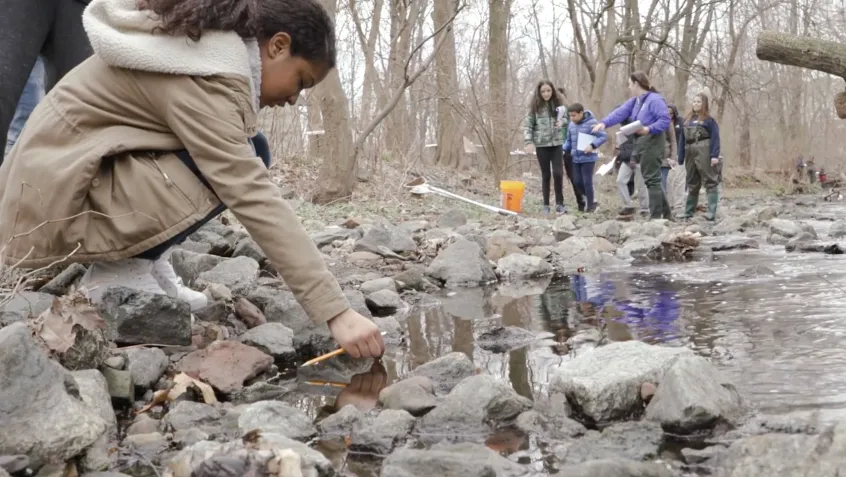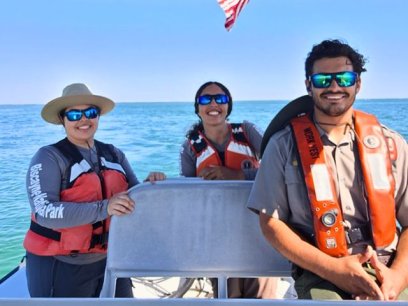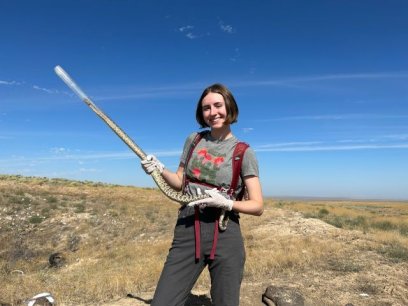
In February 2020, teachers at Benjamin Franklin Middle School (BFMS) in Teaneck, New Jersey, launched a Greening STEM implementation project by holding a multi-grade assembly replete with guest speakers and big plans to investigate water quality within their local watershed.
Months of planning and scheduling were coming to fruition. Excitement filled the school auditorium and halls. Over the coming weeks, students would spend #WatershedWednesdays preparing to go into the field to collect water samples and inventory macroinvertebrates.
Then came March.
After two days of seventh graders conducting field work, the project was disrupted on Friday, March 13, by the COVID-19 pandemic. What was unfolding across the river in New York City was now spreading like a wildfire in Teaneck and other New Jersey communities. Going forward, there would be no more watershed fieldtrips.
What to do?
Salvaging a Suspended Greening STEM Project
Teaneck Creek Conservancy staff members Alexa Fantacone and Allie Fellema, the school’s partners for the project, sprang into action. They grabbed the recently purchased field investigation equipment and headed for the creek. Using their phones, they put on their waders and filmed each other conducting the very activities the eighth graders were supposed to complete that Friday. Afterwards, arrangements were made to share the videos with BFMS faculty and students.
Although efforts were made to adjust to the new reality of a public health crisis, it would be back to basics to finish out the year. Unfortunately, like so many activities effected by the coronavirus pandemic, this implementation project would not be completed as the school district shifted to a virtual learning model.
What to do?
Greening STEM in the Time of COVID-19
The question of “What to do?” has surely crossed the minds of everyone at some point during the ongoing COVID-19 pandemic. For many STEM educators working on projects with NEEF, the direct first-hand experiences of using the environment as the context for STEM learning—a central tenet of the Greening STEM model—would not be possible anytime soon. However, that hasn’t stopped them from finding creative and innovative ways to carry on.
At Great Smoky Mountains National Park, an after-school STEM program grant recipient funded by the US Department of Education, a team of educators has adapted their previously in-person, park-based STEM learning program for the virtual classroom. The original program sent park staff to visit schools before students took field trips to the park, where they would participate in various environmental monitoring projects.
Now, the series of STEM learning activities, Schoolyard Exploration, Smokies Style, can be conducted at home or around the schoolyard. The adaptations are a combination of synchronous (group) and asynchronous (individual) activities. The park staff developed and recorded a professional development workshop to support educators in facilitating the set of activities that have been adapted for a virtual learning approach.
Future Projects for Greening STEM
NEEF is currently partnering with several federal agencies on Greening STEM projects—including the National Park Service, US Forest Service, Bureau of Land Management, and US Department of Education—in an ongoing effort to promote use of the environment as the context for STEM education.
The Greening STEM approach, which combines place-based, three-dimensional, project-based, and community-based instructional approaches, seeks to seed the development of STEM learning and environmental education ecosystems by funding demonstration projects involving collaborative partnerships between non-formal and formal educators, community stakeholders, and natural resource management agencies.
Current Funding Opportunities
To learn more about Greening STEM, including resources for educators and instructions for implementing the Greening STEM model at your school, visit our Greening STEM Hub.


